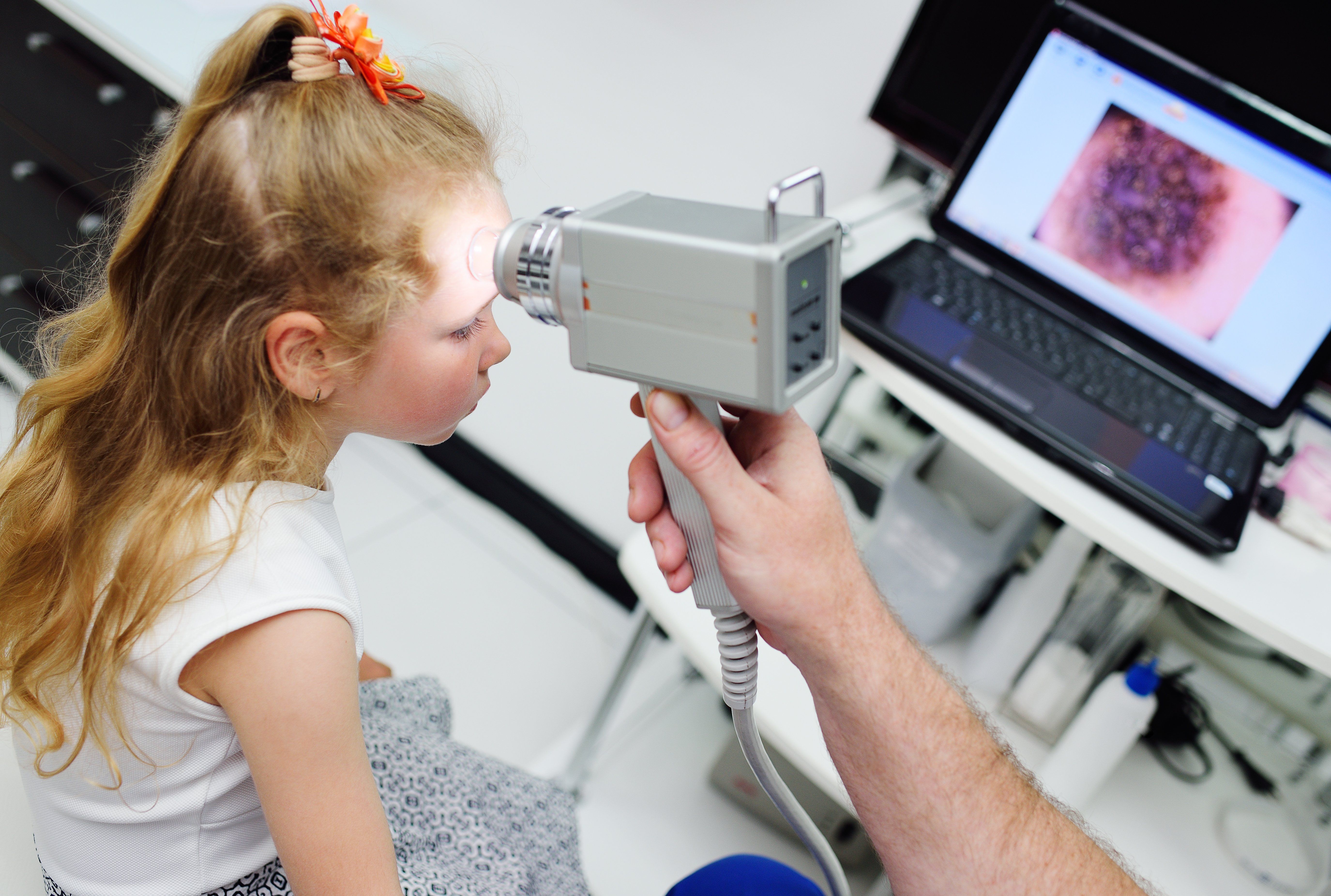- Case-Based Roundtable
- General Dermatology
- Eczema
- Chronic Hand Eczema
- Alopecia
- Aesthetics
- Vitiligo
- COVID-19
- Actinic Keratosis
- Precision Medicine and Biologics
- Rare Disease
- Wound Care
- Rosacea
- Psoriasis
- Psoriatic Arthritis
- Atopic Dermatitis
- Melasma
- NP and PA
- Skin Cancer
- Hidradenitis Suppurativa
- Drug Watch
- Pigmentary Disorders
- Acne
- Pediatric Dermatology
- Practice Management
- Prurigo Nodularis
- Buy-and-Bill
Publication
Article
Dermatology Times
Melanoma subtypes differ in children and teens
Author(s):
Pediatric melanomas are often misdiagnosed by physicians. Adolescents have a more aggressive disease course than children and are treated with adult protocols leading to chronic morbidity.
Pediatric melanomas are often misdiagnosed by physicians. Adolescents have a more aggressive disease course than children and are treated with adult protocols leading to chronic morbidity. (Evgeniy Kalinovskiy - stock.adobe.com)

Spitzoid melanomas seem to be more common in children than in adolescents diagnosed with melanoma. And, adolescents diagnosed with melanoma tend to follow a more aggressive disease course than younger children, shows a small study.
Findings of the study, published March 23 in Pediatric Dermatology, support the thinking that pediatric melanoma in younger children might be a distinct biologic entity.
"These results suggest that children and adolescents present with different melanoma subtypes and that adolescents have a more aggressive disease course than children," wrote researchers who were led by Elena B. Hawryluk, M.D., Ph.D., Massachusetts General Hospital, Boston.
Melanoma is rare in children, especially during the prepubescent years. Data from the Surveillance, Epidemiology and End Results cancer registry shows 1,185 pediatric melanoma patients (ages 0-19) between 2000 to 2010. Of these patients, 11 percent were diagnosed by 9 years old and 89 percent between 10 to 19 years old.
Pediatric melanoma is often misdiagnosed in children because it might not present with the typical ABCD features. Gaining a better understanding of pediatric melanoma is important, the authors wrote. Adult protocols that are used to treat pediatric melanoma might result in unnecessary morbidity in children whose disease follows a less aggressive course.
THE STUDY
This was a small retrospective study of 32 children diagnosed with melanoma between Jan. 1, 1995 and Dec. 21, 2016. The study included 12 children (11 years old and younger) and 20 adolescents (between 11-19 years old).
The spitzoid melanoma subtype occurred in half of the patients making it the most common among younger patients, but with no mortalities. It occurred in only two of the 20 adolescents with four deaths.
There were no significant differences in the pediatric age groups in Fitzpatrick skin phototype, tumor site, sex or race. Few of all children studied presented with a first-degree family history of melanoma, a previous blistering sunburn, indoor tanning use, significant medical comorbidities or a predisposing skin lesion.
In addition to presenting most commonly with spitzoid melanoma, six children presented with in situ, nodular, superficial spreading and unclassified melanoma. The most common melanoma subtype among adolescents was superficial spreading, diagnosed in seven adolescents, followed by six patients with in situ, four with unclassified, two with spitzoid and one with nodular melanoma.
While not a significant difference, children in this study tended to have more advanced melanoma, histologically.
Prior studies have found children and adults with comparable disease stages of melanoma have similar mortality rates. But, like this study, others have found that very young children with melanoma seem to have more favorable outcomes than adolescents and adults with melanoma. In fact, few children who are younger than 11 when diagnosed with the skin cancer die, despite research suggesting that they’re often diagnosed later, more likely to present with thick tumors and have sentinel lymph node metastasis.
“During more than 20 years at this tertiary referral center, no one with melanoma younger than 11 died, with a follow-up ranging from 9 to 137 months and a median follow-up of 44 months,” the researchers write.
While these researchers didn’t find significant differences in survival when they looked at melanoma subtype, they write melanoma subtype might drive survival differences between children and adolescents. Another reason for the better outcomes in young children could be better parental surveillance than in the adolescent years.
REFERENCE
Bartenstein DW, Kelleher CM, Friedmann AM, et al. “Contrasting features of childhood and adolescent melanomas.”Pediatric Dermatology. 2018;35:354–360. https://doi.org/10.1111/pde.13454







